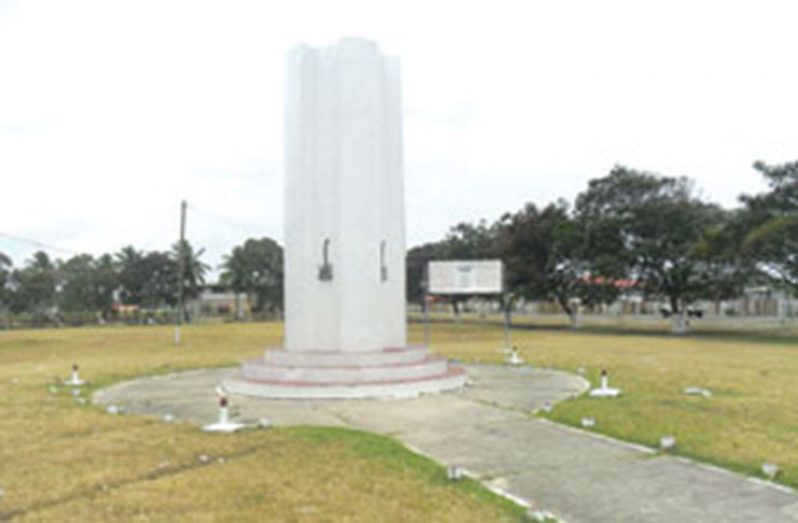THE ENMORE MARTYRS MONUMENT
ON April 22, 1948, almost 1 200 labourers from plantations Enmore, Non Pariel, Lusignan, Mon Repos, La Bonne Intention (LBI), Vryheids Lust and Ogle protested about the social conditions. Therefore, the sugar estates hired scabs (persons who worked despite the ongoing strike) to perform the duties of the striking cane cutters. Despite their actions, sugar production decreased. The Sugar Producer’s Association then enforced new measures to force the striking workers back on the fields. These included persecution for trespassing and eviction. However, the workers were determined and on June 5, 1948, they staged a massive protest in Georgetown. The cane harvesters were determined to make the estate owners take note of their plight. Thus, on June 15, 1948, the workers assembled at Plantation Enmore in an attempt to prevent the scabs from working in the factories. As the crowd attempted to gain entry to the plantation, police, armed with bayonets advanced on them. The scene became uncontrollable and three workers were killed on the spot while two succumbed to their injuries. In addition, 14 of the striking workers were injured. The death of the workers signalled the beginning of improved conditions for the sugar estate workers. In 1976, the Enmore Martyrs monument was constructed in remembrance of Rambarran, Lalabajee, Surujballi, Harry and Pooran. The monument was unveiled by Prime Minister Linden Forbes Sampson Burnham, on June 19, 1977.
THE CHRISTIANBURG WATERWHEEL

At the end of the 18th Century, the Dutch had settled in an area which was a former sugar estate. It was originally known as Stabroek. Later it was renamed by Governor Christian Finette, after his wife and his wife’s family; the Burgs. After the English invasion in 1803, John Patterson was given the task to establish quarters for the Government officials. He acquired some vessels from the Amerindians and began the production of logs. After finding great difficulty to transport the logs, Patterson surveyed Christianburg and found the Katabuli Creek which was an ideal location for production of timber. The force of the water flowing through the creek was strong enough to allow the construction of a hydro-powered sawmill. A large iron waterwheel was installed with the necessary equipment to allow Patterson to saw his logs before their transportation to Georgetown. The wheel is still there today and it reminds us of the best examples of technology used to capitalise on the rich and natural environment of Guyana.



.jpg)








